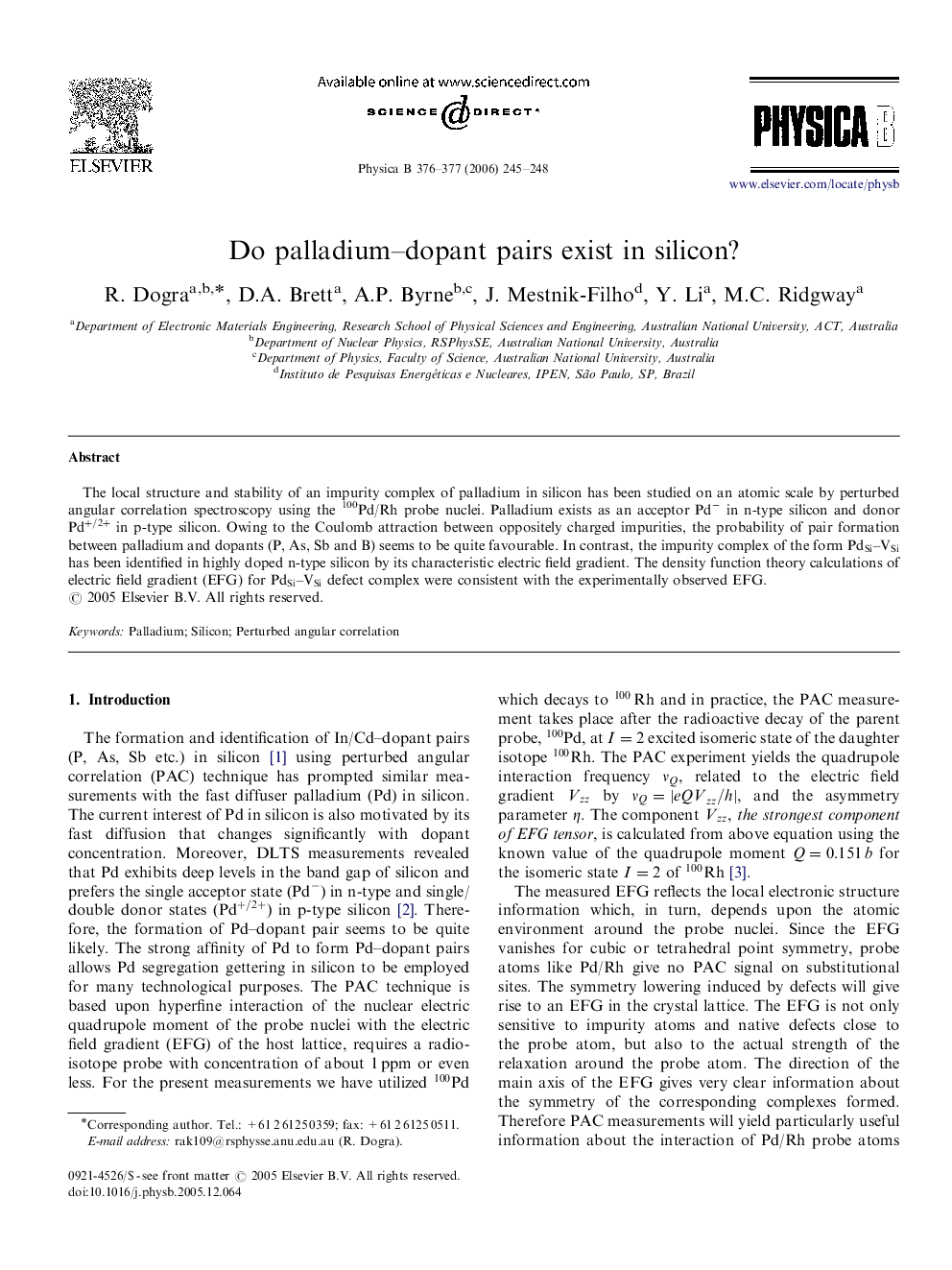| Article ID | Journal | Published Year | Pages | File Type |
|---|---|---|---|---|
| 1816695 | Physica B: Condensed Matter | 2006 | 4 Pages |
Abstract
The local structure and stability of an impurity complex of palladium in silicon has been studied on an atomic scale by perturbed angular correlation spectroscopy using the 100Pd/Rh probe nuclei. Palladium exists as an acceptor Pd- in n-type silicon and donor Pd+/2+ in p-type silicon. Owing to the Coulomb attraction between oppositely charged impurities, the probability of pair formation between palladium and dopants (P, As, Sb and B) seems to be quite favourable. In contrast, the impurity complex of the form PdSi-VSi has been identified in highly doped n-type silicon by its characteristic electric field gradient. The density function theory calculations of electric field gradient (EFG) for PdSi-VSi defect complex were consistent with the experimentally observed EFG.
Related Topics
Physical Sciences and Engineering
Physics and Astronomy
Condensed Matter Physics
Authors
R. Dogra, D.A. Brett, A.P. Byrne, J. Mestnik-Filho, Y. Li, M.C. Ridgway,
